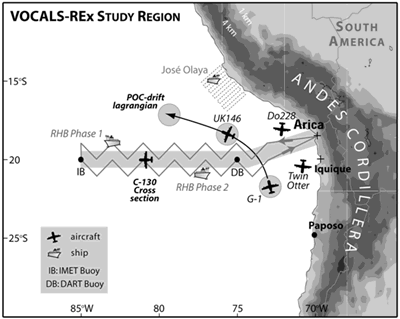Click on image for full size
Courtesy of UCAR Digital Image Library
Modeling the Future of Climate Change
Predicting how our climate will change in the next century or beyond requires tools for assessing how planet responds to change. Global climate models, which are run on some of the world's fastest supercomputers, allow scientists to better understand how the Earth works and how it will react to changes in the future.Global climate models use hundreds of different mathematical equations to describe processes and interactions in the Earth system. The mathematical equations for a large climate model require quick supercomputers that perform many calculations rapidly, often more than 80 million calculations an hour.
The most sophisticated climate models take into account five important components:
- The biosphere: the amounts and types of animals and plants
- The hydrosphere: the oceans and other bodies of water
- The cryosphere: including sea ice, glaciers and ice sheets
- The atmosphere: its chemical composition and behavior
- The geosphere: tectonic variations such as volcanic eruptions and moving continents
For more information about climate models, visit the following pages:
What will the next century bring? According to scientists Tom Wigley (NCAR) and Sarah Raper (Climate Research Unit, England) there is 90% probability that temperatures will rise 1.8 to 4.0°C (3.1 to 7.2°F) in the next 100 years as a result of human influences, assuming continued greenhouse gas emissions. To put this amount of warming into perspective, remember that in the past century, a smaller temperatures rise of only about 0.6°C (1.0 °F) has been able to disrupt many aspects of the Earth system.












